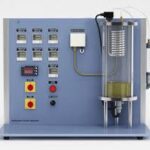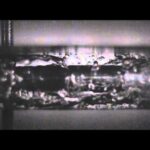1) Steps involved
a) Early stages of boiling, some bubbles stick to the surface of the pan caused by the release of air molecules dissolved in liquid water and should not be confused with vapor bubbles
b) At temperature rise chunks of liquid water rolling up and down as a result of natural convection currents, followed by the first vapor bubbles forming at the bottom surface of the pan.
c) Subcooled boiling: bubbles get smaller as they detach from the surface and start rising, and eventually collapse in the cooler water above.
d) Intensity of bubble formation increases as the water temperature rises further, water temperature reaches the saturation temperature this full scale boiling is the saturated boiling.
2) Boiling Regimes and the Boiling Curve
a)  Increases but heat flux decreases. This is because a large fraction of the heater surface is covered by a vapor film, which acts as an insulation due to the low thermal conductivity of the vapor relative to that of the liquid.
Increases but heat flux decreases. This is because a large fraction of the heater surface is covered by a vapor film, which acts as an insulation due to the low thermal conductivity of the vapor relative to that of the liquid.
ii) Both nucleate and film boiling partially occurs.
iii) Also called the unstable film boiling regime, is avoided in practice.
e) Film Boiling (beyond Point D)
i) In this region the heater surface is completely covered by a continuous stable vapor film. Point D, where the heat flux reaches a minimum, is called the Leidenfrost point
3) A typical boiling process will not follow the boiling curve beyond point C
a) Boiling process cannot follow the transition boiling part of the boiling curve past point C unless the power applied is reduced suddenly
b)  Point C on the boiling curve is also called the burnout point, and the heat flux at this point the burnout heat flux
Point C on the boiling curve is also called the burnout point, and the heat flux at this point the burnout heat flux
c) When the power applied to the nichrome wire immersed in water exceeded qmax even slightly, the wire temperature increased suddenly to the melting point of the wire and burnout occurred
4) Enhancement of Heat Transfer in Pool Boiling
a) Any modification that will enhance nucleation on the heating surface will also enhance heat transfer in nucleate boiling.
b) Irregularities on the heating surface, including roughness and dirt, serve as additional nucleation sites during boiling.
c) Boiling heat transfer can also be enhanced by other techniques such as mechanical agitation and surface vibration. These techniques are not practical because of the complications involved.


